Continued from Parte 1.
My text having overtaken the start of photography, I'll have to backtrack a bit to Montevideo's Aeropuerto Internactional de Carrasco (MVD) which was looking quite shiny and new. Bag claim (evidently I misremembered: there were three on the international side, though just the one active):
Aduanas (customs). That bienes de ingreso/egreso temporal would seem vague enough to cover just about anything if they felt like it; fortunately they didn't give a second glance (perhaps even first glance) to my scandalous screwdriver and packing materials.
Free at last, but not quite home.
I would have picked up a local SIM but the booth was closed for the night. It turned out my Panama SIM worked on roaming, at least briefly, which it hadn't in the US.
The bit of the world that is me thanks Uruguay for the welcome.
In contrast to Panama, there was no crowd of taxi syndicate reps soliciting eagerly. Instead it's an orderly racket; you go to the taxi counter and arrange a ride with prepayment and receipt. Having been warned the cab would be around US $55, I held out for the $13 shuttle bus, taking the wait time to replace that stolen sunscreen, collect my thoughts and decompress a bit. I found myself tired but alert and relieved.
The only exterior shot I managed of the airport, so it'll have to do:
Some Himpton by Halton thing near the airport with well-lit street:
First shuttle stop was at the Motel Bahamas:
A pleasant nighttime drive down the coast and another one or two stops later and I'd made it to my destination in the relatively nice Pocitos neighborhood.
The buildings here cap out around 10-12 stories due to zoning. Most are mixed-use, with shops at ground level and apartments above. My first impression of the area compared to most of Panama City was of something older (turns out many buildings date to the 1930's if I recall), more stable (as opposed to wreckage and new construction everywhere), cleaner, and far more pedestrian friendly (wide and not entirely treacherous sidewalks). Aaron pointed out that this does not apply to the whole city, with outlying neighborhoods ranging from more typically LatAm to outright favela (though these not walled off as in Brazil).
Right around the block was an ANCAP gas station with rare 24-hour convenience store and deli, which served me for breakfasts, rather dreadful espresso (they couldn't believe I didn't want sugar, which probably says it all), and a printed map so as to navigate free of any "mobile device" nonsense.
First daytime views of the coastal Rambla, supporting vehicle, bike and pedestrian traffic and beach access, as I made my way to meet my host.
Oh yes, the street signs serve advertising; it does seem to help keep them in good shape.
One of the larger mini-parks opposite the beach, near the Avenida Brasil.
Battery scooters for hire.
"Por la vida y la convivencia" : La Policia seem to like their mottos...
There's a lazy tourism option.
I have no idea. It didn't seem animate.
"Orgullosamente blanco" - "proudly white" - referring, I gather, to the party colors of the recently victorious Partido Nacional rather than something racial.
Either Ave. Brasil or Espana, two thoroughfares that converge at the coast.
Corner florists seem to be thriving...
Corner locksmiths not so much.
Heading inland a bit; some gym/yoga place.
Apparently they don't need no education at the Center of Foreign Tongues. Aaron tells me the buildings generally don't get repainted much because maintenance work is taxed the same as new construction.
Perhaps this would have been the spot for a better coffee.
There's minimal piped natural gas infrastructure (as in Panama, though there it's often provided building-wide and refueled by tanker trucks).
Another florist, and some of the typical sycamores lining the streets.
To be continued with rare electronics and proper tourism.
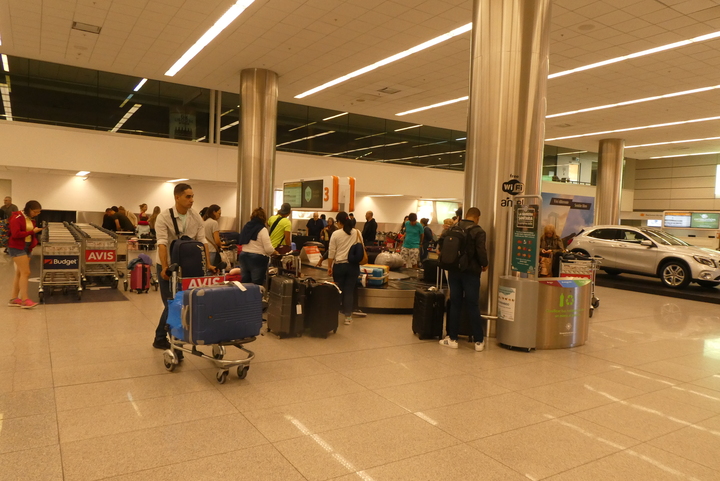
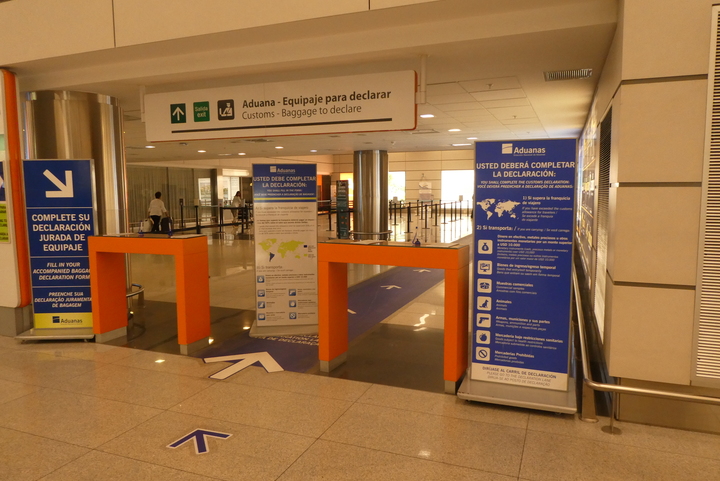
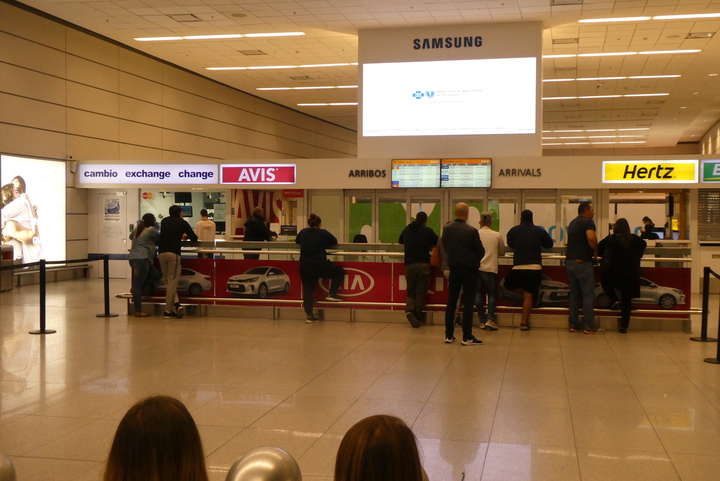
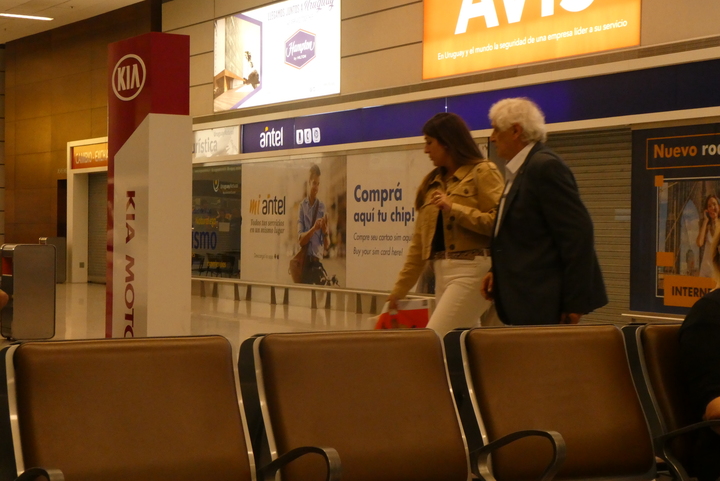


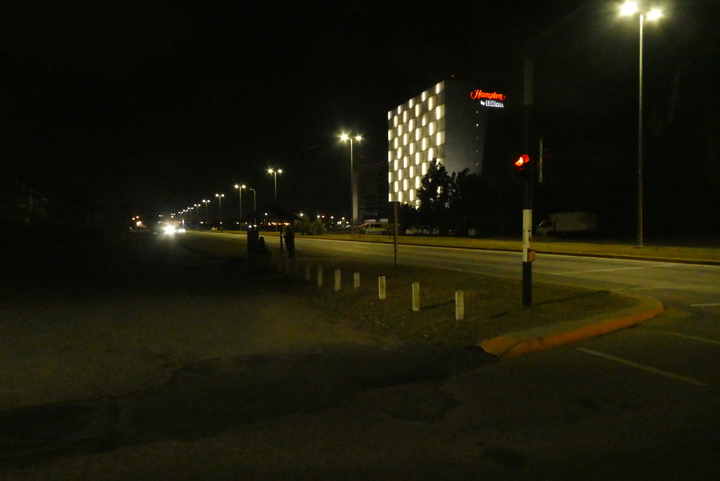

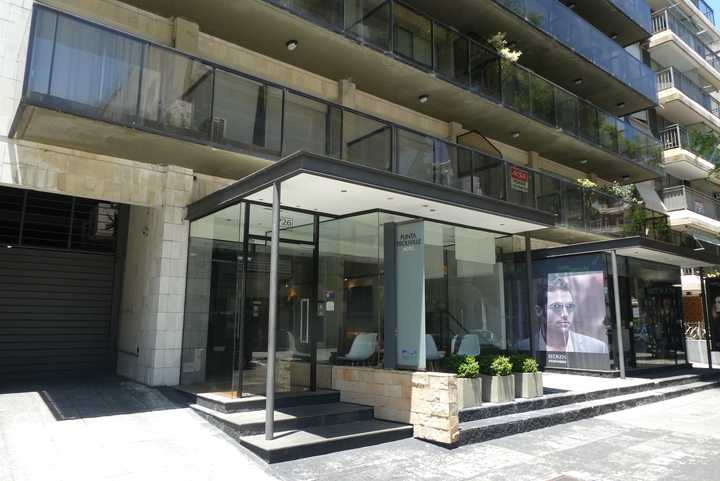
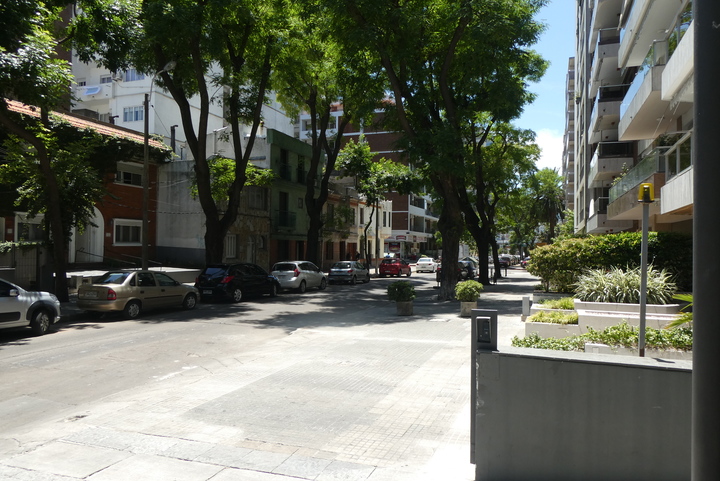
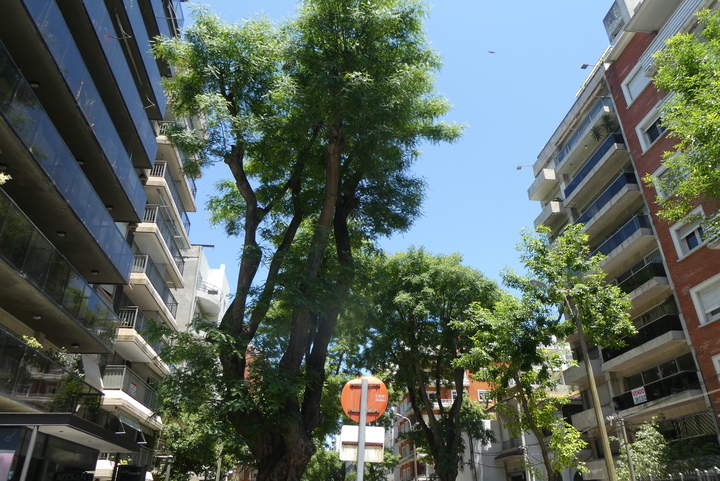
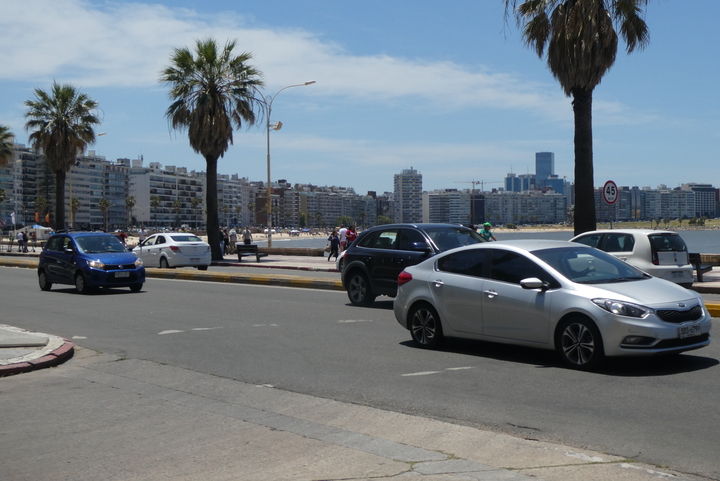
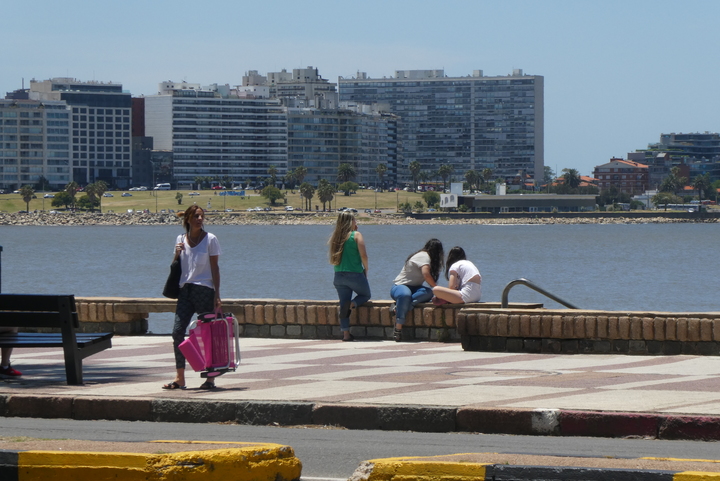
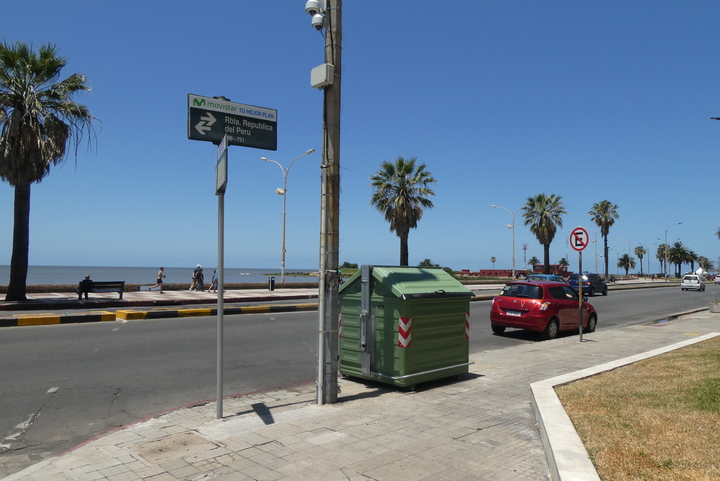
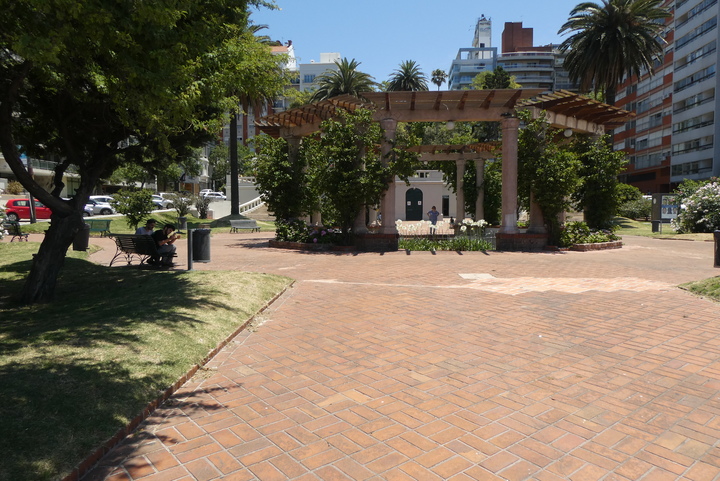
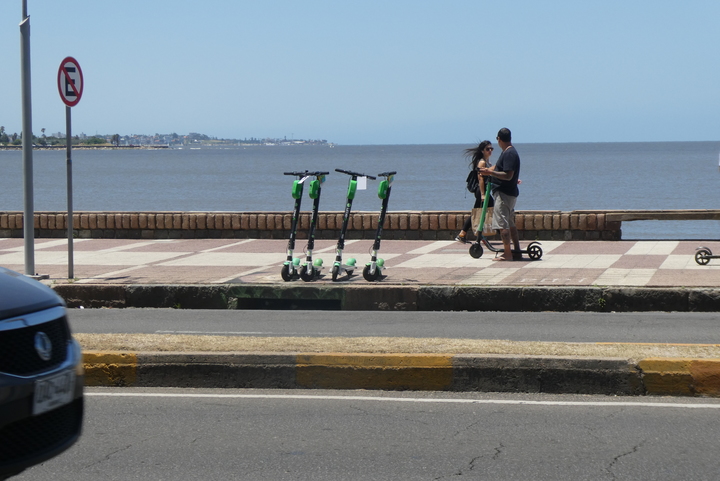
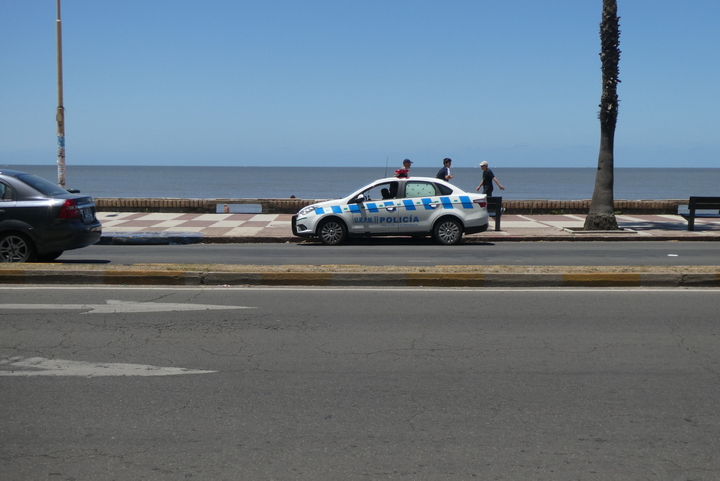
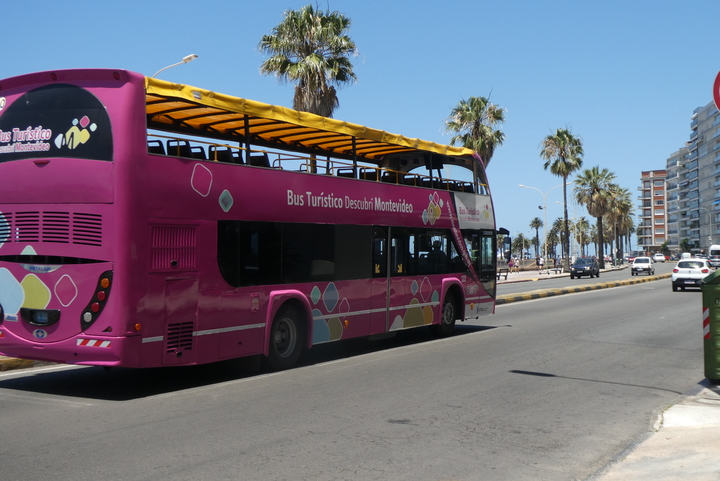
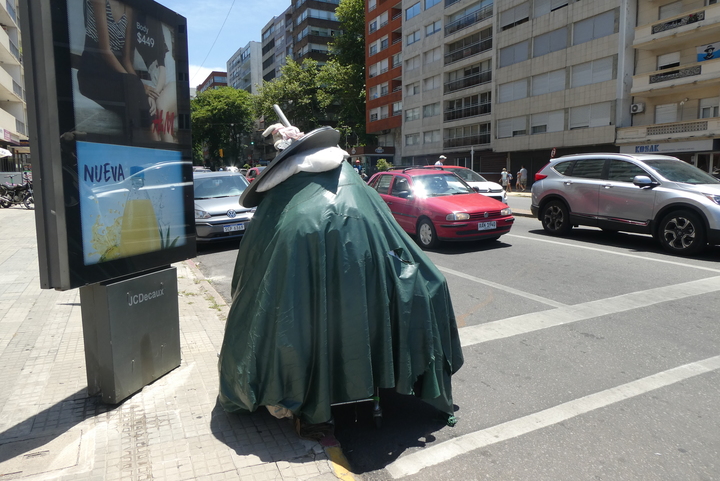

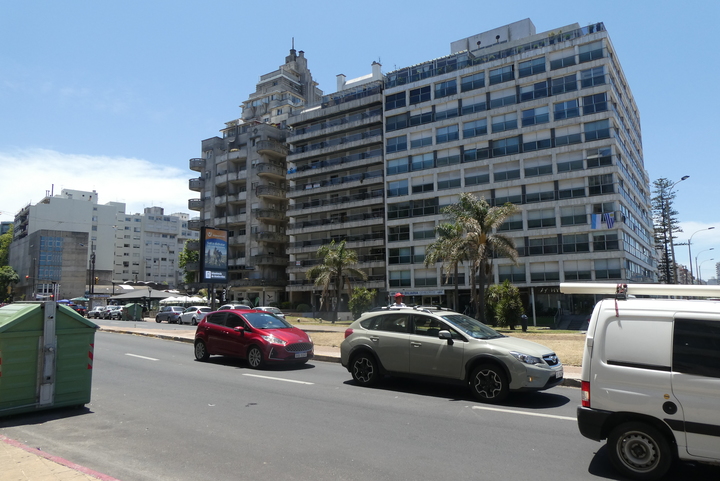
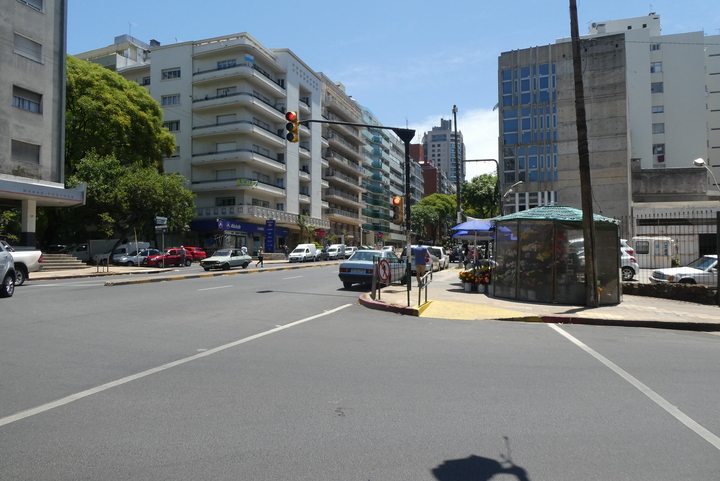

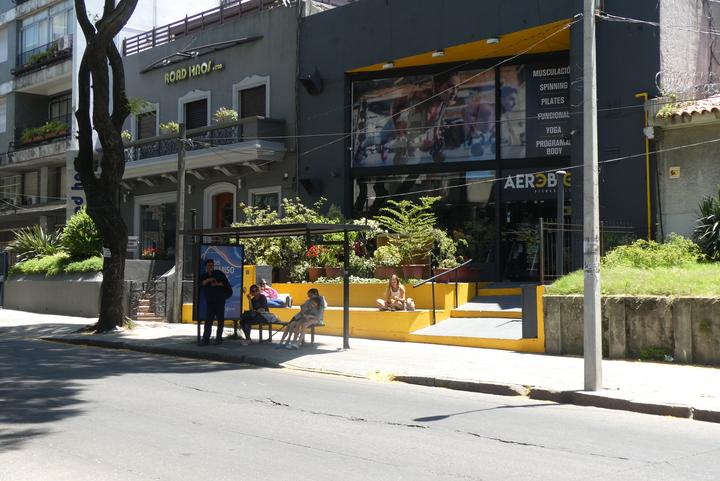


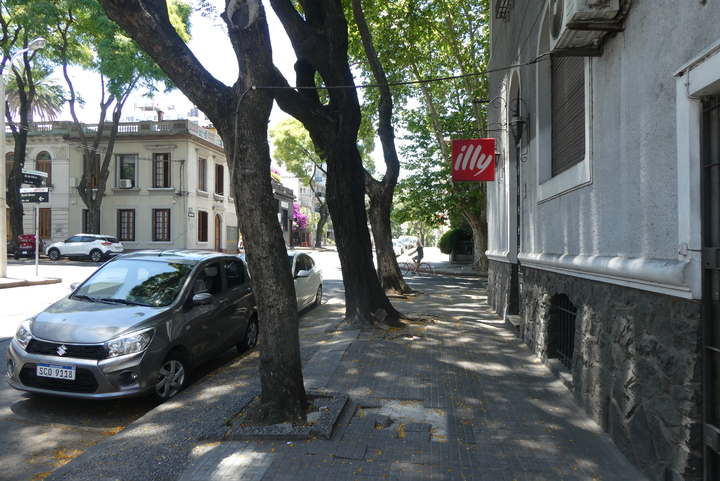

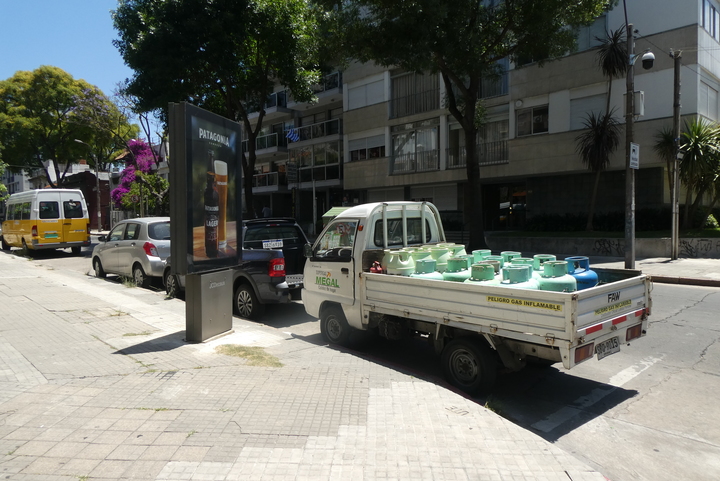
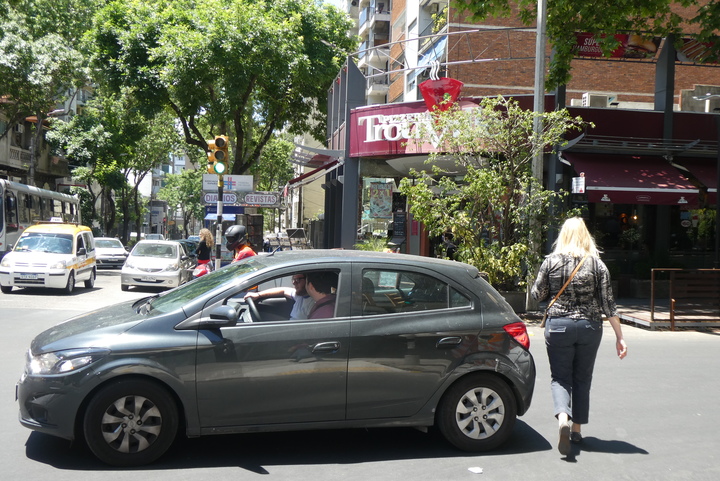
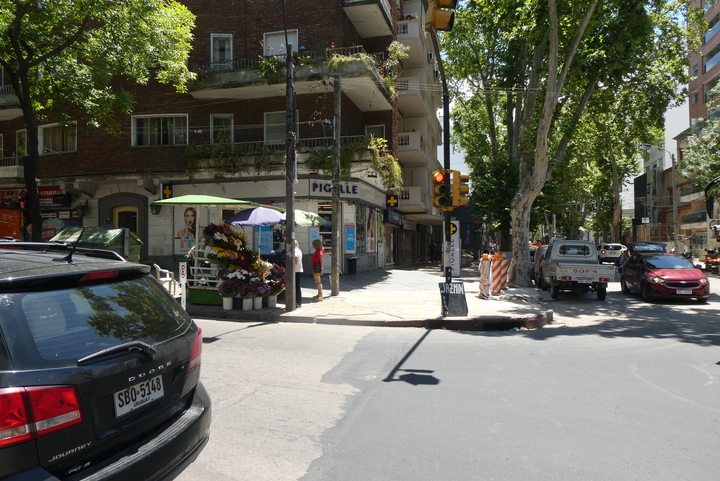
Now I wonder - how do you make the difference between street signs (advertisement!) and police car (motto!)?
"Orgullosamente blanco" - from the picture it might even refer to the building itself - certainly whiter than its neighbour!
"I found myself tired but alert and relieved." - why tense/compressed in the first place, I half-wonder.
Thank you for the photos!
Comment by Diana Coman — 2019-12-11 @ 20:43
The mystery street is Avenida Brasil rather than Boulevard España. The big giveaway is in the large Art Deco building covered in black mold. It gets featured in architectural tours and overview of Montevideo as an "Art Deco City" which as mentioned seems to largely be a consequence of loosing their desire to build big things sometime around 1930-1940.
@Diana Coman - The "Proud to be White" thing is a political slogan. It's how the locals that don't do the socialism identify themselves as apart from the old Red socialist party and the new Red socialist coalition. The closest similar thing in the English language space is probably "Redneck Pride" or more loosely the "Don't tread on Me" Gasden flag. One variant of the Blanco party flag features the face of Juan Antonio Lavalleja topped with a Sombrero de Vaquero. After the Red General Rivera won a presidential election (Uruguay's population in that time ~60,000 persons) Lavalleja did the open rebellion thing until he was integrated into a triumverate. He died shortly there after. The wikipedo bio of Lavalleja neglects that during this time Uruguay had seperate capitals of Montevideo (limited to the present old city) and Cerrito de la Victory a short walk away which controlled the rest of Uruguay.
But somehow elections matter or something. Dumas has a very Pantsuit hearsay based agiprop piece on the dispute, thus popular histories misrepresent the hungry derps holed up by the bay as having been "The Government of Uruguay" while the rest of the country lead by men controlling the national wealth didn't particularly need them at all. Then the Empire of Brasil intervened in favor of the port crowd and against the landed whereafter everything started going to shit.
Comment by BingoBoingo — 2019-12-12 @ 16:48
BingoBoingo Huh, I had no idea, thanks for the detailed info! (Though yeah, I had a suspicion it was *not* really about the paint :D )
Comment by Diana Coman — 2019-12-12 @ 17:24
Well on that building the white isn't paint. If you zoom in you can see it is tiles, some of which have fallen. It doesn't actually freeze so exterior tile is somewhat of a big thing here. Especially as a way to avoid paying the painting tax.
Comment by BingoBoingo — 2019-12-12 @ 17:38
[...] Continued from Parte 2. [...]
Pingback by Uruguay parte 3: encontrar, destruir y proteger « Fixpoint — 2019-12-12 @ 17:47
I hadn't realised they were teeny tiles, you're right of course. Are those ceramic tiles or local stone or what exactly anyway? And now I wonder if they manually set there all those tiles for a whole building (a whole town too?)
What a weird thing to have a tax on painting/maintenance though - in saner places there is usually a *rebate* on such things since well, do they want balconies/buildings to fall on the pavement or what?
Anyways, the things I learn from a picture!
Comment by Diana Coman — 2019-12-12 @ 18:06
@Diana Coman:
Come to think of it I wasn't certain. Merriam-Webster says of "motto":
Whether "for life and coexistence" qualifies as appropriate, indicative or guiding for police, I could indeed see it in the same category as "your best plan" for a cell provider.
The question of whether my bags made it was part of it (not that I was fretting about that the whole flight or anything, but the moment of truth was at the end). But I also find flying stressful generally - not the flying itself so much as the logistics and restrictive environment.
Glad you liked the photos.
@BingoBoingo: thanks for filling that in!
Comment by Jacob Welsh — 2019-12-12 @ 18:12
@Diana Coman - Normally they only decorate the front of the building, but the tiles are almost always ceramic. On very new contruction there's some building with the "trendy" wood look print pattern ceramic tiles.
Many building are painted too for however long that lasts. Others go bare concrete. Usually only the facades of buildings get any maintenance attention. The sides are either bare concrete or paint that the weather will fade to bare concrete over time.
It is not unknown for chunks of building to fall. It is sufficiently uncommon enough to make the news when there are casualties, but otherwise... The city has a lot of Art Deco ruins occupied despite their rightful status as ruins.
Comment by BingoBoingo — 2019-12-12 @ 21:08
Motto comes from medieval italian, "legend affixed to heraldic piece", ultimately from late latin, ~"grunt". I suppose it translates the late medieval failure of heraldics as such -- if the icon needs the explanation then who needs the icon.
It's known today because mid-1800s the mountebanks/street sellers came up with this bit of confectionery wrapped in fancy printed paper with a little scrap of poetry included, the perfect interested gift for the various pompous wenchlets all about London. You'd trade a twopence for a kiss through that token, lest someone could accuse them of selling out. Unsurprisingly, it was called a motto-kiss, and so motto entered the otherwise rather limited vocabulary of the psychotic young man, the unemployable young "gents" with grocery debts and "hopes of social mobility" roundly resting on public expenditure.
Whole thing's pretty illustrative of the coy contortions, and their impact on deplorable society, really.
Comment by Mircea Popescu — 2019-12-13 @ 10:01